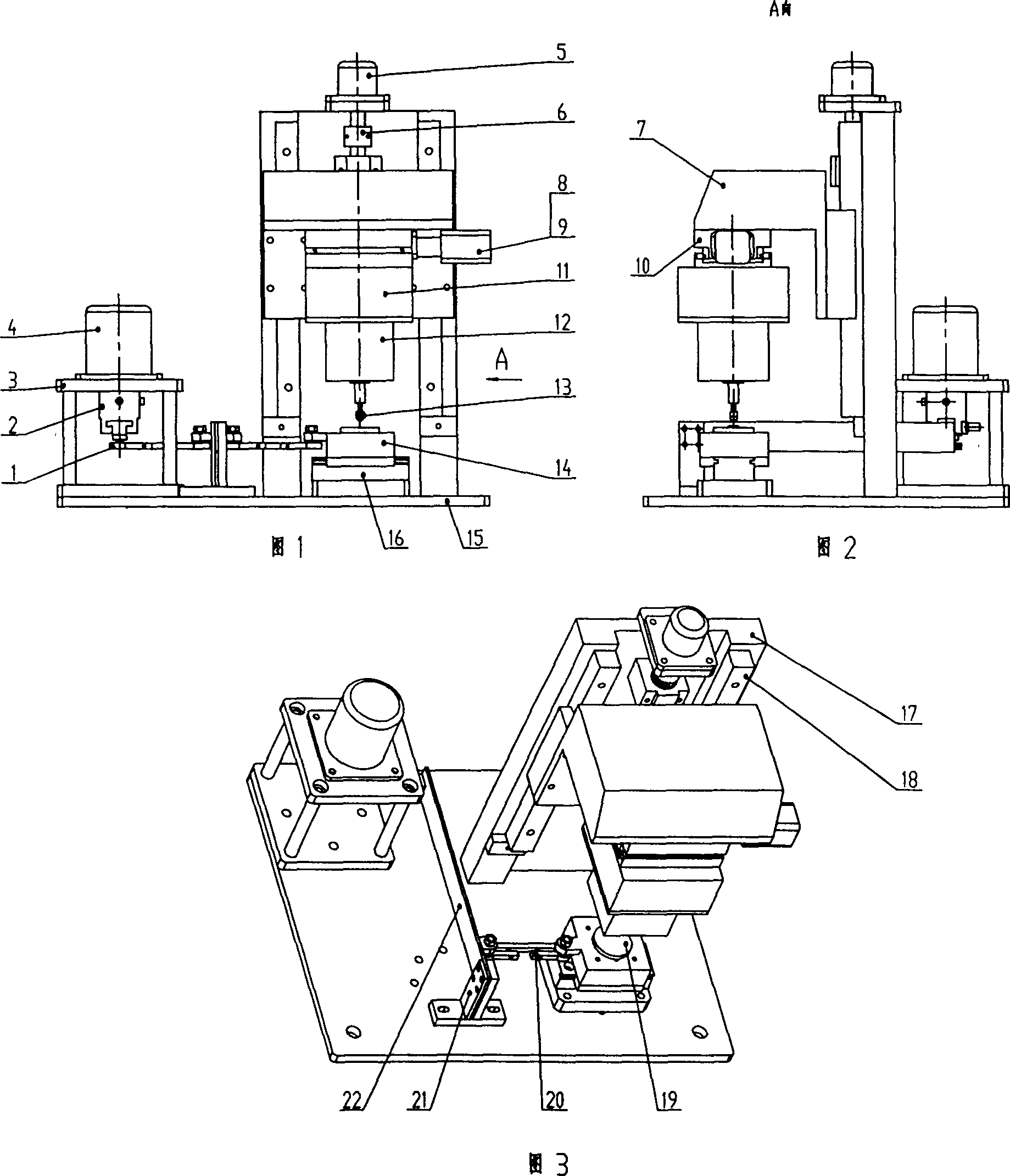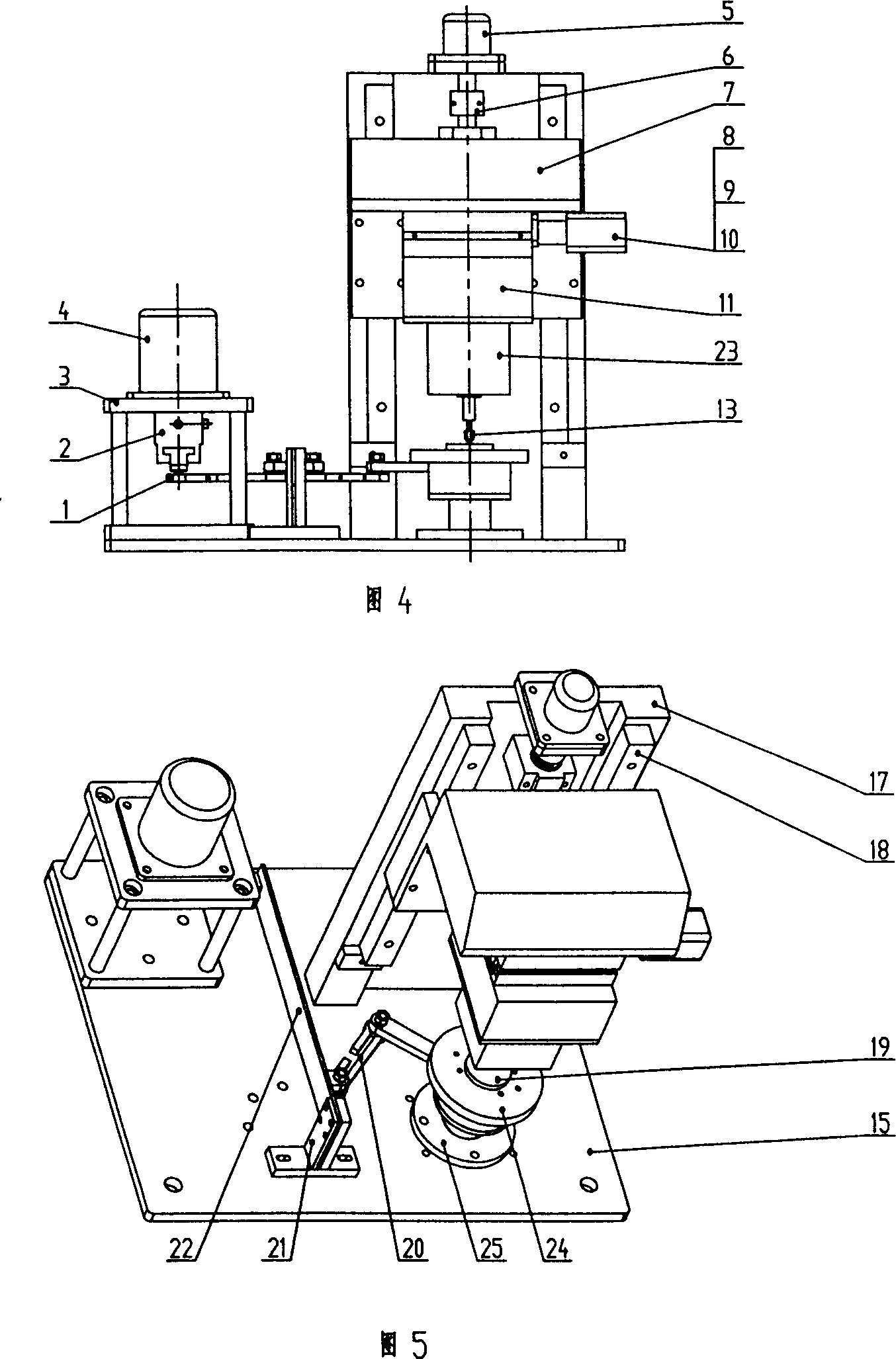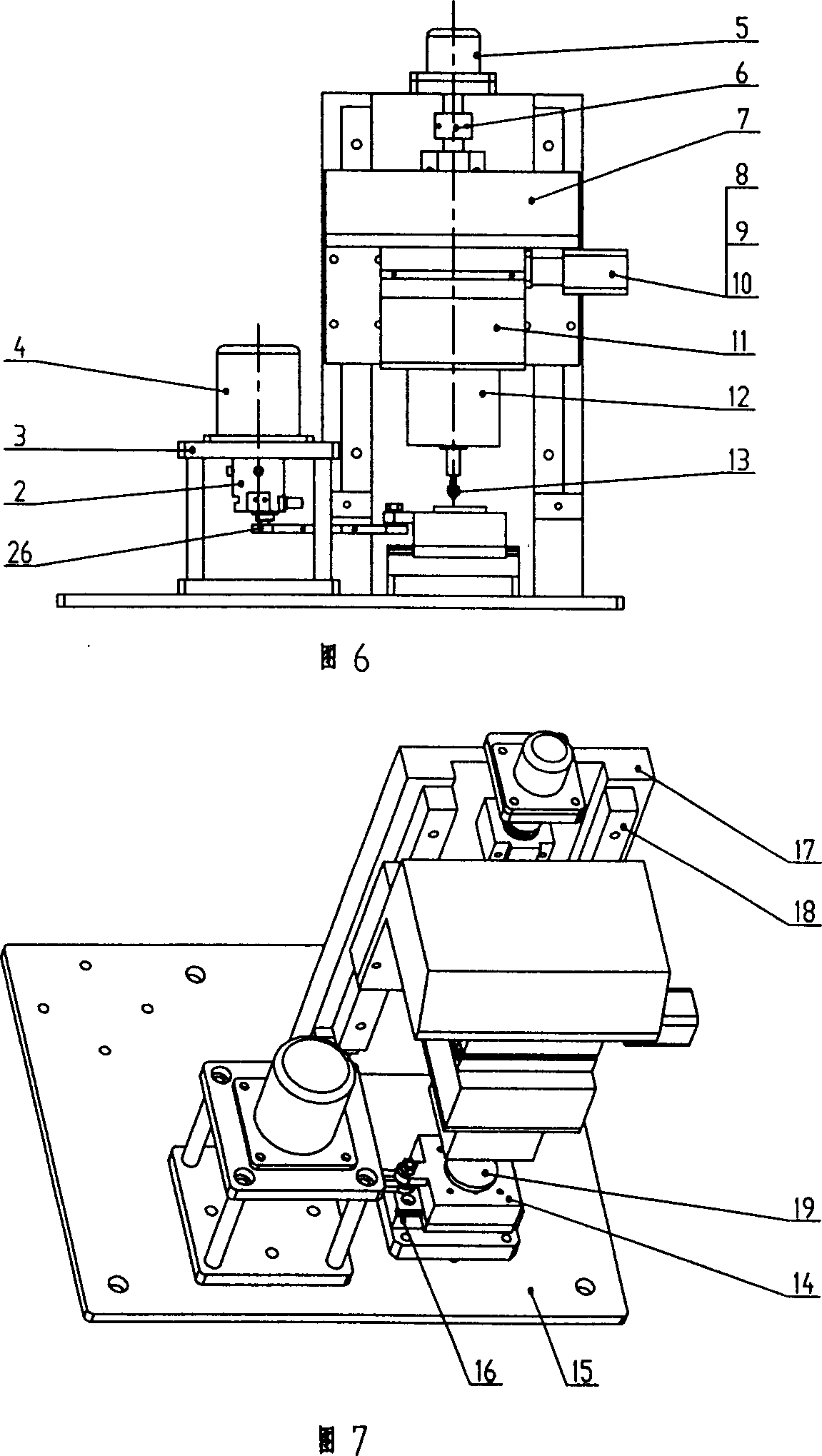Multifunctional micro friction wear testing machine
A wear test and micro-friction technology, which is applied in the field of testing machines, can solve the problems of inability to test torsion motion forms, large equipment volume, and large driving force, and achieve the effects of small error, reasonable layout, and large driving force
- Summary
- Abstract
- Description
- Claims
- Application Information
AI Technical Summary
Problems solved by technology
Method used
Image
Examples
Embodiment 1
[0022] Embodiment 1: As shown in Fig. 1, Fig. 2 and Fig. 3, the micro-friction and wear testing machine is composed of a driving device, a moving device, a loading and measuring device and a lifting platform arranged on the bottom plate 15, and the driving device passes through a cantilever fixed on the support 21 The elastic plate 22 and the connecting rod 1, 20 are hinged together with the movement device. According to the proportional amplification and elastic bending effect of the cantilever elastic plate 22, a small vibration amplitude is generated at the hinge joint between the cantilever elastic plate 22 and the connecting rod 20, and the small amplitude is generated by the connecting rod. Transfer to the sliding table (or rotating table). The loading and measuring device is connected with the lifting platform and is located above the moving device. The driving device is composed of a motor bracket 3, a stepping motor 4 and an eccentric body 2, the stepping motor 4 is a...
Embodiment 2
[0023] Embodiment 2: As shown in Fig. 4 and Fig. 5, the components of the mechanism are basically the same as in Embodiment 1, the difference is that the movement device connected to the drive device is composed of a support 25 and a rotating table 24 matched therewith, and the lower sample 19 It is fixed on the turntable 24, and the sensor in the loading and measuring device corresponding to the turntable 24 is a torque sensor 23. The turntable 24 is hinged with the connecting rod 20, and twists back and forth together with the connecting rod 20, so that the lower sample 19 and the upper sample 13 generate twisting friction and wear motion, and the magnitude of the torque is detected by the torque sensor 23.
Embodiment 3
[0024] Embodiment 3: As shown in Fig. 6 and Fig. 7, the mechanism components are basically the same as in Embodiment 1, the difference is that the connecting rod 26 of the driving device is directly hingedly connected with the sliding table 14 of the moving device, and the driving device is located close to the On the side of the moving device, the bracket 21 and the cantilever elastic plate 22 arranged on the bracket 21 are removed. Since the proportional amplification link of the cantilever elastic plate is reduced in the middle, the slide table 14 can obtain a relatively large linear reciprocating motion, so that the lower sample 19 and the upper sample 13 produce friction and wear motion with relatively large amplitude, and the magnitude of the friction force is detected by the force sensor 12 .
PUM
 Login to View More
Login to View More Abstract
Description
Claims
Application Information
 Login to View More
Login to View More - R&D
- Intellectual Property
- Life Sciences
- Materials
- Tech Scout
- Unparalleled Data Quality
- Higher Quality Content
- 60% Fewer Hallucinations
Browse by: Latest US Patents, China's latest patents, Technical Efficacy Thesaurus, Application Domain, Technology Topic, Popular Technical Reports.
© 2025 PatSnap. All rights reserved.Legal|Privacy policy|Modern Slavery Act Transparency Statement|Sitemap|About US| Contact US: help@patsnap.com



